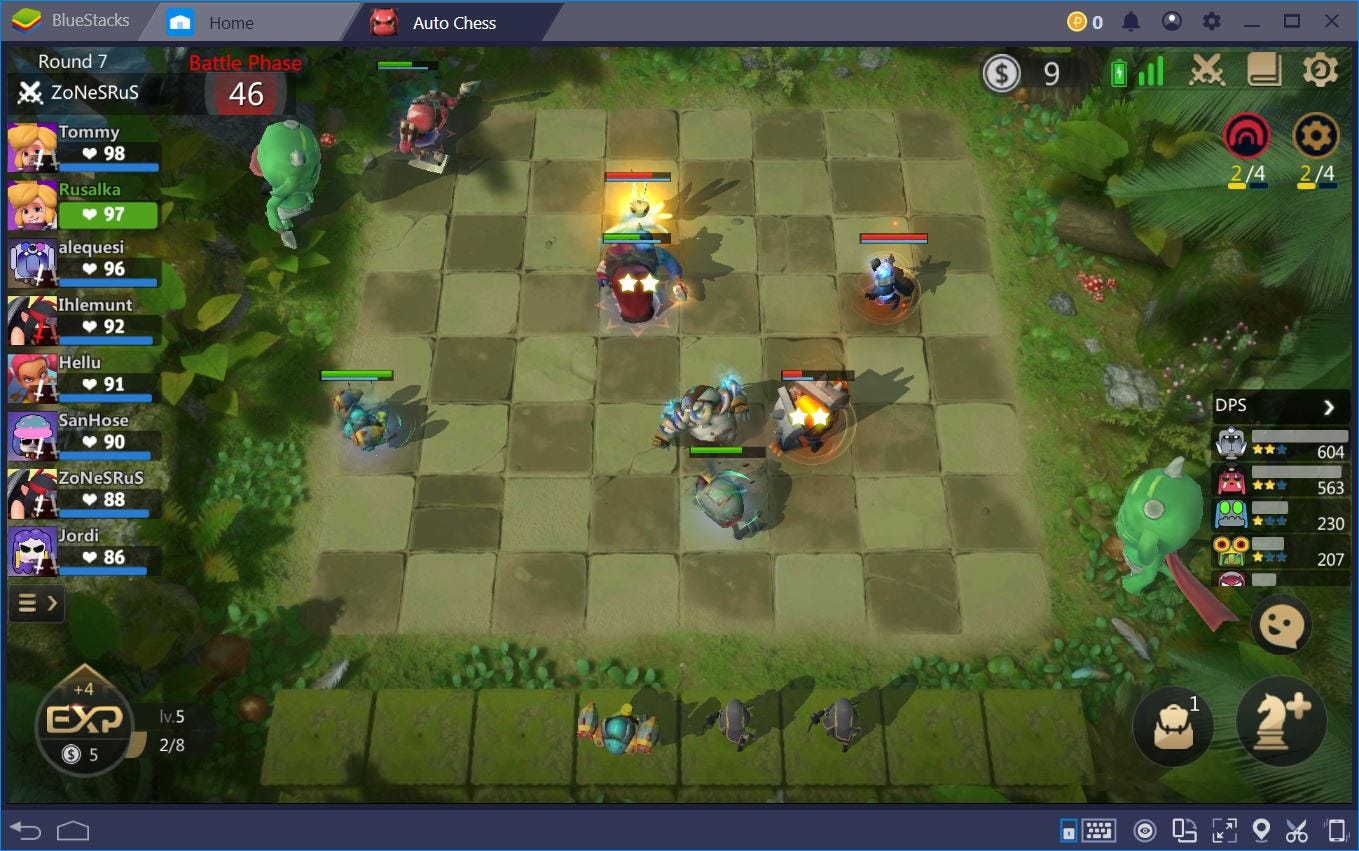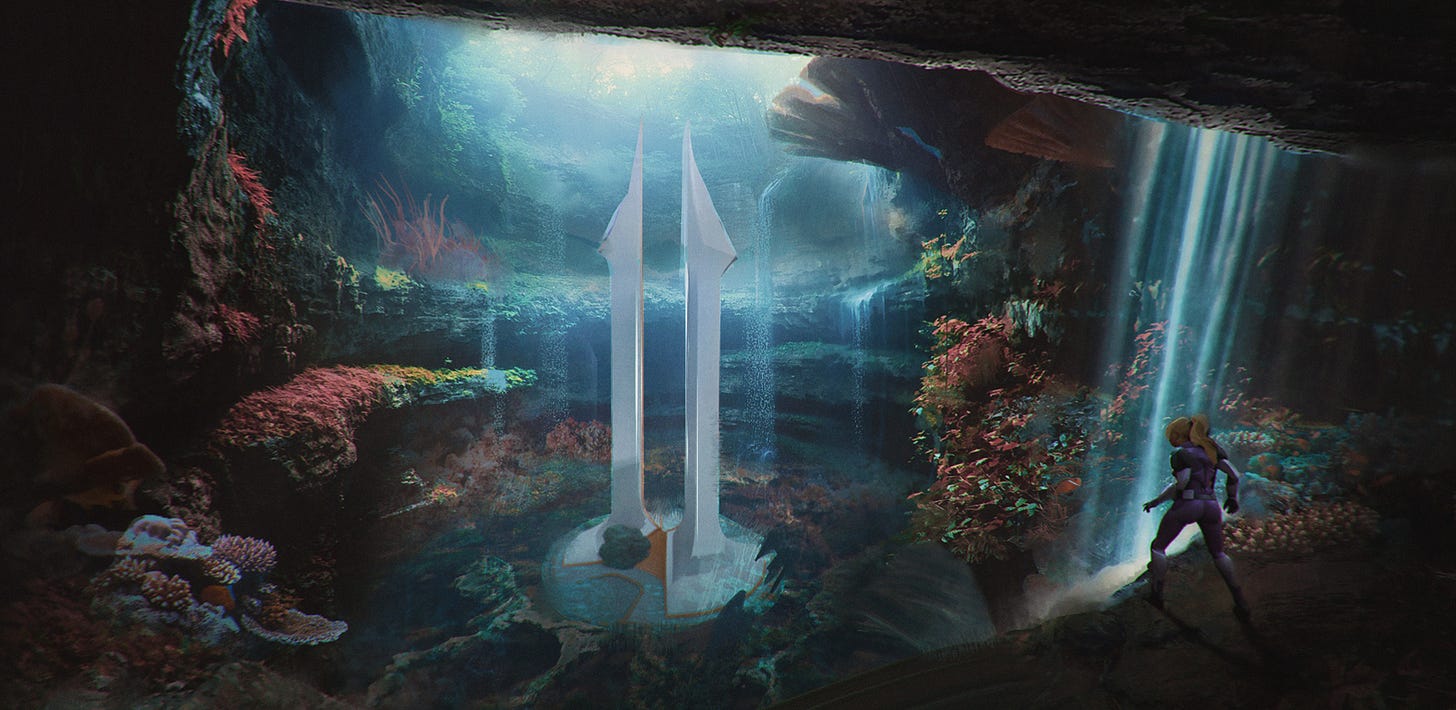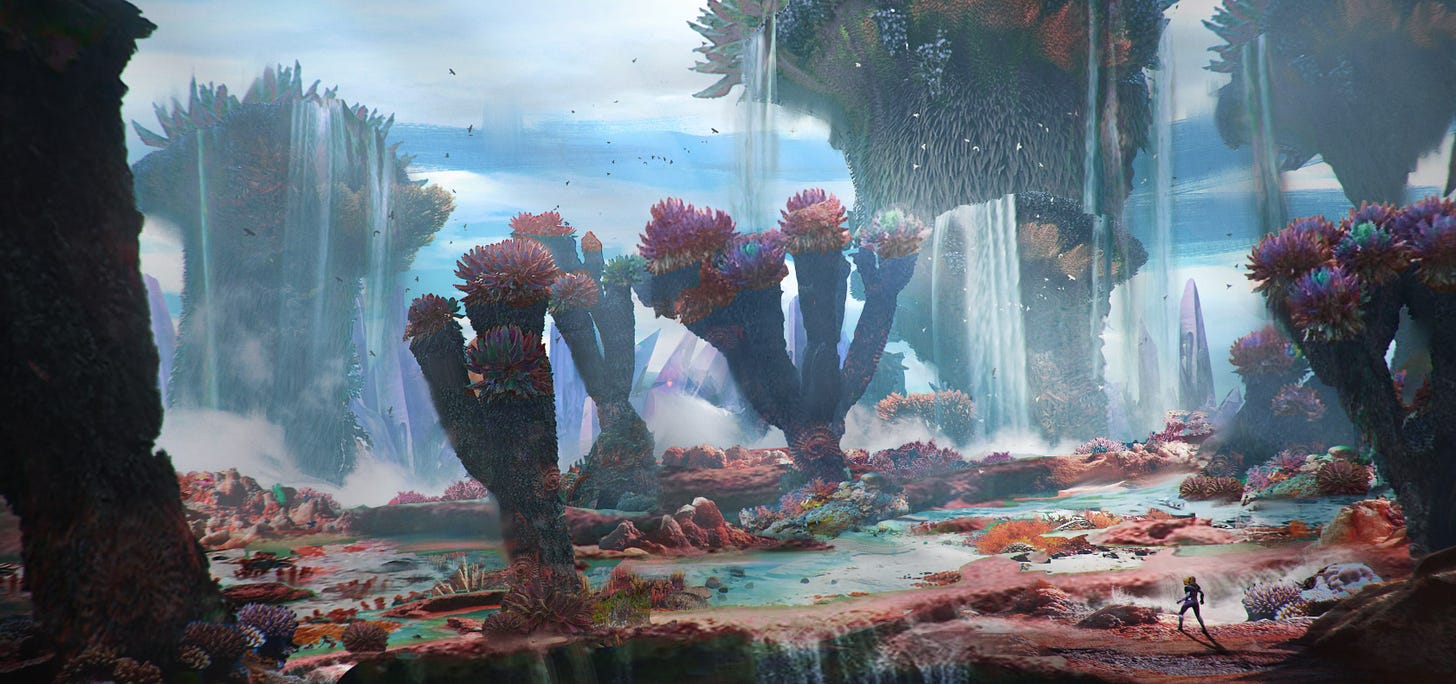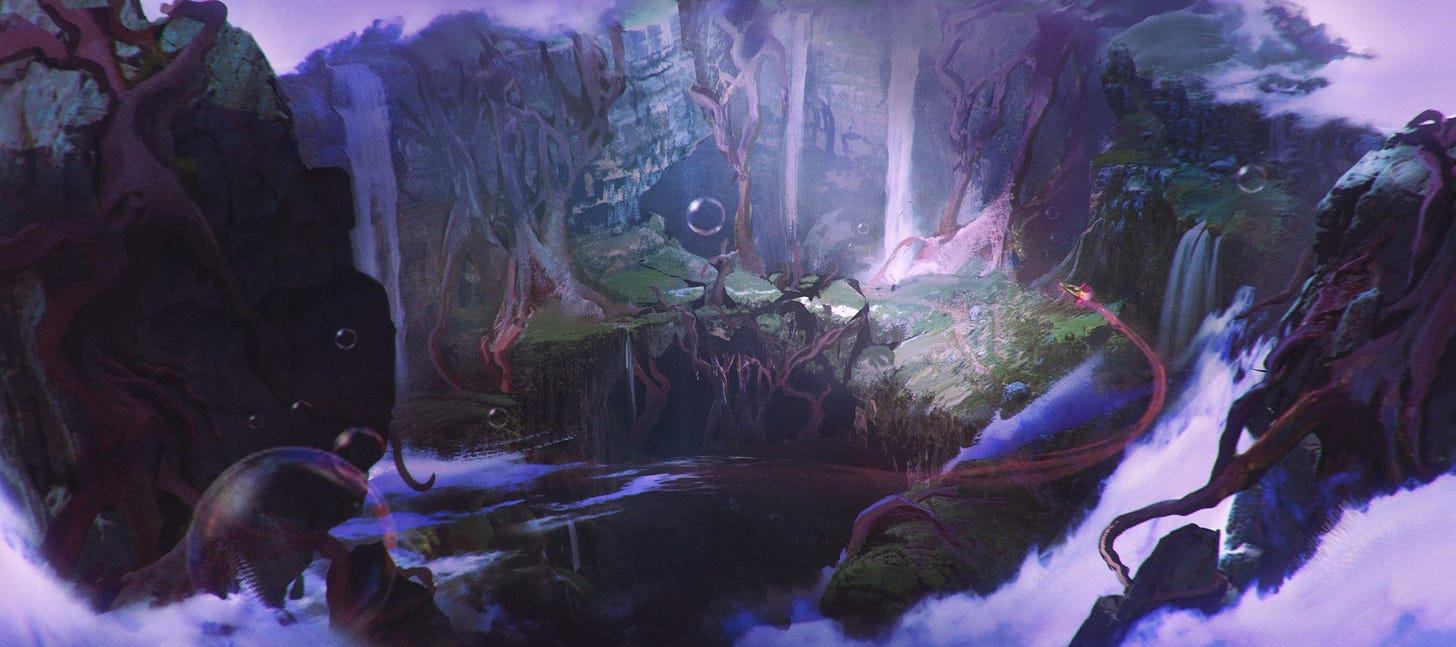MetaPortal Research - Exploring Illuvium
1kx is an early-stage fund that helps founders bootstrap and launch token networks. Founded in 2018, 1kx has built a world-class platform to support over 40 companies, with the goal of being the most founder-friendly and helpful source of capital.
We are looking for Analysts to help source deal flow and do preliminary research, currently with a focus on NFTs and the Metaverse. If that sounds interesting, you can check out the job description and application details here.
Introduction
For a game that hasn’t been released yet, a lot has been said about the potential of Illuvium, and the leap in quality it could represent for NFT gaming.
Aiming to be a truly decentralised, AAA-rated NFT game, Illuvium promises to take the player on a journey across beautiful landscapes, battling and capturing wondrous beasts. This is just the surface level of what’s on offer though, as Illuvium is underpinned by the free-to-play and play-to-earn elements that imbue NFT games with that extra sense of magic. What’s more, the action all takes place on an Ethereum scaling solution, the chain known as Immutable X. Could this be the tech crypto-native gaming needs to enable unbridled growth?
Having recently added the $ILV token to the Metaverse Index, we wanted to peek behind the fancy graphics to discover what really makes Illuvium special, and to understand exactly what being a fully decentralised protocol involves. This means looking at the game in-depth, reviewing the tokenomic design, and studying the community and organisation for clues as to how it might evolve from here.
At the intersection of worlds
NFTs and in particular NFT gaming is a hot trend in crypto right now. The ‘overnight success’ of Axie Infinity has drawn interest from crypto and non-crypto native commentators alike, and gaming related tokens have been on a tear since mid-June. Illuvium is no exception, and has undoubtedly caught the interest of NFT gamers, judging by the nearly 90,000 Discord members, and the plethora of Youtube videos dedicated to dissecting it. One way the project differs from others in the space however, is in the desire to be decentralised from the start:
“We strongly believe a decentralised gaming economy provides the best fusion between crypto/blockchain/DAO enthusiasts and gamers looking for open access devoid of corporate interference.”
By trying to replace the centralised development studio model and at the same time still deliver top quality graphics and gameplay, Illuvium is attempting to sit at the intersection of multiple trends. By coalescing around a DAO, the community can be more deeply involved in decision making and are able to capture upside from day one, creating a team of evangelists. The benefits of this setup are well documented, and we discussed tokens as equity previously right here on MetaPortal. When applied to an NFT game like Illuvium, this model means community members can influence the artistic and structural direction of the game, and share feedback with the core team in real time, ostensibly helping rather than hindering development progress. This is in contrast to Axie Infinity where the core team still makes decisions, most recently changing the payout for Adventure play and shifting rewards to the Arena. A change that immediately affected the price of certain Axies, forcing players to shift their strategy when playing to earn, as Arena play became more lucrative.
With a combination of the latest in human coordination tools for the DeFi natives, high quality graphics and an immersive open-world environment, Illuvium is looking to capture players from non-crypto, crypto native and gaming worlds alike. We have to say, it seems to be working. With a Discord packed full at 89k members, and a governance token with some of the highest liquidity levels of any project we’ve seen (certainly in the Metaverse space), the demand to be involved, even 6 months prior to launch, is massive.
A closer look at the game mechanics
Style of game
When it does launch, Illuvium will enable players to explore an open world (3/7 regions at least) while trying to capture Illuvials to create a formidable team ready for Arena combat. Designed as a Role Playing Game (RPG) first and foremost, it will incorporate a lot of elements that RPG players are familiar with. Things like crafting, travelling, levelling up and of course, battling. All these elements exist in the Illuvium universe. In fact, there are a lot of similarities with Pokemon, one of the most popular strategy RPGs ever created. For anyone familiar with Pokemon we can draw parallels to help illustrate how Illuvium is structured.
Pokemon - Illuvial (Creatures used for battling as part of your team)
PokeBall - Shard (Used to capture the creatures)
Evolution - Fusing (Levelling up your team)
Type - Affinity and Class (Determines which Illuvial will be better against another e.g Water vs Fire)
PokeDEX - Illuviary (Device for keeping track/managing your collection)
Trainer Gym - Battle Arena (Take on players 1 to 1)
The main difference between Pokemon and Illuvium however, is the replacement of turn-based combat with an auto battler. An auto battler, also known as auto chess, is a subgenre of strategy video games that features chess-like elements where players place characters on a grid-shaped battlefield during a preparation phase, they then fight the opposing team's characters without any further direct input.
In this interview from earlier in the year, Kieran and Aaron discuss how this style of play involves a lot more strategic skill, pitting the players head-to-head just like in Chess. This format ensures players have to curate their Illuvial collection and think about which teams will work best in each match, rather than being able to pin it all on one extremely powerful character. It’s not just the Illuvials that fight either. The player character also takes part in the battle, adding yet another dynamic element to the combat.
Gameplay
Illuvium is an open-world RPG with a number of different paths available to explore. Not only that, but with the tagline ‘Fight for ETH’ the game will clearly offer the chance for players to generate real value from their playing time. Interestingly, and in contrast to Axie Infinity, Illuvium will also launch as a free-to-play game. This is similar to popular console and PC games like Fortnite and Player Unknown’s Battlegrounds, where huge player counts are the norm in part because of the low barrier to entry. By making this choice, the team is trying to make it easier to get started on a play-to-earn journey. Kieran has confirmed multiple times that it will be possible to ‘grind’ up to a powerful team from scratch. He was also clear though that this will be no mean feat, and will require dedicated playtime and probably a little luck with captures in order to keep up with those who pay-to-play. It will be important to strike the right balance here, so as not to disadvantage and thus dissuade players from taking up the challenge in the first place.
Another point to make here is that although the game is free-to-play, launching on PC first means players will need to have $700+ of computer hardware to get involved, which takes some shine off the free-to-play statement. Despite this upfront cost, we expect a few different player types to emerge, taking advantage of play-to-earn opportunities in the following unique ways:
The Collector
This is the player who enjoys roaming the planet looking for new areas to explore, expanding their Illuvial collection and ultimately hunting for the rarest captures. They can monetise their experience by offering help and education to newer players through tweet threads and Youtube videos, where they can also entertain fans through live streaming. Of course, collectors will also be able to earn by selling items on the Illuvidex.
The Combatant
This player will spend most of their time in the Ranked Arena, having built a team that has the breadth of capability to take on most opponents. Being successful in the arena is lucrative, and can be amplified by wagering on themselves in the Leviathan Arena too. Combatants should be careful not to fly too close to the sun here however, as there is always a bigger fish...
The Merchant
Merchants take advantage of the arbitrage opportunities created by time-strapped players. By leveraging their ability to grind out playing time, they can sell their items via the exchange to those who happily pay a premium to level up quickly.
The Landowner
The very latest update from the team is the development of a city-building mini-game, in which players can mine resources for use in the main Illuvium game. Landowners will be able to sell their assets to players looking to upgrade their shards and possibly more. We cover the land based mini-game in a section just below.
Given the variation in ways to play Illuvium, we expect the different player types to actually balance each other out, in the same way that high yields in DeFi are reduced as information spreads to a wider audience. Whichever method of play-to-earn is most lucrative will attract most players, until it is more in line with the other options, at which point equilibrium will be reached.
Land
As if building a decentralised AAA rated game from scratch on the blockchain wasn’t enough, an Illuvium Improvement Proposal (IIP) just passed, confirming there will be a land based mini-game to launch alongside the main game.
The idea of this extension, dubbed Illuvium: Zero (need to be in Illuvium Discord), is to create a city building game that includes land ownership, mining and resource extraction. Resources generated in Zero can be ported back to the main game and used for activities like curing shards. Kieran has stated in recent interviews that while some of the resources required for crafting equipment will come from in-game drops, with Zero the land owners can supply another portion, and thus monetise their activity. Perhaps the coolest part of this extension is Zero launching on mobile. This goes some way to overcoming the hurdle of needing a console to play Illuvium at launch, as mobile play is already ubiquitous even in developing countries.
This adds a whole new dimension to the Illuvium universe, but is not without risk. We’ve seen the launch date slip back a couple of times already, and is currently slated for Q1 2022, now suddenly there is a whole new mini-game to develop as well. While this doesn’t seem to have hampered demand for $ILV (similar story with Sandbox as the launch gets pushed back) it could turn into an issue if the team doesn’t deliver, due to overly ambitious goals.
Immutable X (IMX) Layer 2
The Illuvium development team believes that high transaction costs, throughput limitations and complexity of Ethereum are the main barriers to adoption for NFT games. Which is why they wanted to launch on a layer 2 chain. They chose to use Immutable X’s L2 solution (Immutable X is also an Australian project, Kieran and Aaron are both based in Sydney) to overcome the limitations of the Ethereum main chain.
The team cited the following benefits as being key reasons for the choice:
Maintaining self-custody of your NFTs with the same level of security as mainchain Ethereum, something not seen in alternative scaling solutions like Matic and xDai.
Transactions are instant, and moving back to mainchain Ethereum is trustless and verifiable.
Unlike other solutions, there is no need for you to own a unique L2 token to buy, sell, send, or receive NFTs
You get more interesting and attractive game mechanics and design from Illuvium thanks to off-chain minting.
Immutable X will provide turing-complete general computation in the near future thanks to Cairo, technology developed by their partners over at StarkWare.”
In terms of the economics of the relationship, Immutable X gets a 1% fee on marketplace transactions (taken from the seller), with a further 5% going to the ILV vault.
While transaction scalability via layer 2 will encourage growth, it creates another challenge . As we saw with Axie’s move to Ronin, the player count drastically increases as people move to take advantage of the lower cost, shifting demand to the server infrastructure.
The team at Illuvium has considered this and opted for ‘serverless architecture’ as the solution. This doesn’t mean servers aren’t involved! It does however mean Illuvium themselves don’t have to build and maintain them. According to the developers this setup is really well suited for the auto battler style of gaming, and will enable scaling of player count up to the 100’s of millions. Another unique advantage of the setup is that players are not divided by region, which normally limits play to geographical zones like Europe or North America. Instead, all Illuvium players will cohabit the same world and are able to play against one another. Serverless architecture does however add dependency on AWS, for better or worse.
Token design and value capture
While ETH is the primary in-game currency, sILV can also be used to pay any fee excluding IlluviDEX trades and Leviathan Arena wagers. sILV is a token that can be taken as yield by staking ILV, but more on that later. All in-game purchases and fees in ETH are sent to the Illuvium Vault contract, where it is used to purchase ILV and distribute this to stakers. Vault revenue streams arise from two categories; In-game Purchases and IlluviDEX exchange fees.
In-Game Purchases
Shard Curing (used for catching Illuvials)
Travel
Crafting armour or weapons
Cosmetic upgrades
Revival of injured Illuvials
The IlluviDEX
Exchange Fees and Wagering Fees are generated from every sale on the IlluviDEX at an initial rate of 5% of the total transaction value. As we mentioned above, the Immutable X platform (IMX) takes a small capped fee of all transactions on their network in exchange for waiving Gas fees (1%).
Value accrual to ILV and ILV/ETH LP token
Periodically and automatically, the Vault contract uses the fee income (in the form of ETH) to purchase an equivalent value of $ILV from the $ILV/ETH Uniswap V3 pool and $ILV is distributed to staked token holders in proportion to their stake. The process here is quite similar to the one used by WAX blockchain, where a proprietary chain is used for activity, but the economic value accrues back to Ethereum layer 1. In the case of Illuvium, ETH builds up on Immutable X from gameplay and marketplace activity, before it is bridged back to Ethereum and distributed to the staking pools.
To incentivize long-term stakers, there is the option of locking staked tokens on a sliding scale for anything up to 12 months. Those that opt into locking tokens gain a boost in their pool weight as a reward for their confidence in the token. This bonus is linear, and with a maximum locking of 12 months, staked tokens are weighted as twice that of unlocked staked tokens. This weighting affects both Yield Farming Rewards and Vault Distributions.
$sILV Yield Rewards
$ILV rewards obtained through yield farming are escrowed and held by the vault for 12 months. During this time they can’t be withdrawn from the protocol. Instead, stakers can forgo those rewards and claim an equal amount of $sILV (equivalent in value to $ILV) which is minted and transferred to IMX. $sILV is used as an in-game currency, which allows the holder to effectively spend their rewards earlier than the standard 12 month period. All in-game purchases are indexed to USD so a price conversion from $sILV to USD (based on $ILV) is used. It’s worth noting that the process of claiming sILV rewards burns the equivalent amount of ILV. Any sILV spent is used to buy Fuel, which is consumed in-game, effectively reducing the supply of ILV as it never enters circulation.
Although not explicitly mentioned above, you may notice that 100% of the revenue is returned to either players or stakers. This is another outcome of the ‘DAO first’ thinking that puts team members and the community on a level playing field. As for the specifics, 40% of supply has been reserved for yield, 30% for token stakers and 10% for in-game rewards, primarily tournaments.
The Illuvinati and a DAO-first structure
Despite being a relatively young project, the governance model for Illuvium is actually quite advanced. By taking the lessons learnt from Synthetix DAO (a well respected and well functioning DeFi project), the team and community were able to come up with a structure that avoids some of the more common pain points for decentralised organisations. The result is a pretty straightforward process where ILV holders use their token holdings to vote (with quadratic scaling applied) to nominate members of a council. The council then goes on to represent the community and vote on proposals that come through theIlluvium Improvement Process, this lasts for a set period of time before the council members go up for vote again. This is all overseen by the executioner DAO (eDAO) whose role it is to round up nominees, prepare votes for snapshot and generally move IIPs and other governance workstreams forward. Let’s take a look at each of these facets in a little more detail.
Illuvinati Council
The Illuvinati Council will consist of nominees who are voted in by the $ILV token holders, enabling the influence of community representatives who are able to debate and distill technical changes while also not directly providing large $ILV holders a disproportionate voting weight in the outcome of proposals.
To elect council members, holders of $ILV have the ability to nominate an individual for a council seat as well as delegate their vote to a nominee. Candidates for council members must be proposed before the due date of the election, followed by a formal voting period that lasts 72 hours to elect the 5 individuals best suited for the role of governing the platform. The eDAO will then collate all proposed members, and prepare the candidates to be voted on within Snapshot.
Quadratic Voting (QV)
QV is utilized to reduce the voting power of large $ILV holders and thus reduce plutocracy. As a method for balancing governance it is used across the crypto space, and is applied perhaps most notably in quadratic funding rounds held by Gitcoin. Vitalik talks more about the pros and cons of this approach in this 2018 blog post with the co-creator of QV, Glen Weyl.
In the case of Illuvium the potential risks have been discussed in their Discord server, and overall the community seems happy with how the process works. Certainly the elections so far have been uncontentious and lead to a strong group of leaders on the council.
ExecutionerDAO (eDAO)
The last piece of the puzzle is the eDAO. Made up of core contributors and admins, the purpose of this group is to keep the governance process moving swiftly, first by understanding it inside out, but also by doing the backend work like distributing council NFTs or executing snapshot votes. The eDAO also has a special power, the ability to veto anything that comes through as a proposal, even if voted on by the Illuvinati Council. Thus the eDAO acts as a ripchord to protect Illuvium in the event of something truly detrimental being put forward.
Conclusion
Illuvium is nothing if not ambitious. AAA quality, built on blockchain and launched using a DAO first model? Most other projects would take a deep breath before attempting to achieve any one of these. The market seems to believe in the project too, rarely have we felt late to something that hasn’t even launched, but such is the case with Illuvium and the depth of it’s community. This belief is reflected in the token price, with a fully diluted valuation of $4.2b at the time of writing. The core team backed this up by extending their token lockup by 2 years as a sign of confidence in the project. Riding the wave of hype around NFTs more generally, the Illuvium has captured the imagination and attention of at least 89k people already, prior to launch. At this stage these are most likely still crypto natives, meaning there is plenty of room to run as awareness spreads into mainstream gaming.
The game itself, rather like the governance model, has a lot of thought behind it. Perhaps serendipitously, by aiming for something that appeals to a lot of different players, it may potentially give rise to a number of novel play-to-earn opportunities. This is something pretty close to our hearts here at MetaPortal as the future of work is both interesting and exciting to us. We see the opportunity for Illuvium players to work their way up without needing a large upfront investment as crucial to propagating financial freedom through NFT gaming. From there, the paths available to players seem rich and engaging, and we can’t wait to see how they develop. Being a member of the Blockchain Gaming Alliance also signals the intention from Illuvium to not just passively achieve play-to-earn, but actively promote it.
Of course the level of ambition and the number of moving parts add up to a question mark around execution. This manifested itself as pushback on the launch date a couple of times, but as we’ve seen with Sandbox, this doesn’t seem to dampen community enthusiasm. On the governance side of things, risks have been mitigated by using the best-in-class design from Synthetix. DAOs in general are still very new and by no means perfect however, so we expect to see iterations on the Illuvium design in the future. Finally, what we consider to be one of the larger risks at this point is the PC first launch. Given the traction of other NFT games (notably Axie Infinity) due to the element of mobile play, it seems like a missed opportunity to scale right from the get-go. Of course we now know that Illuvium:Zero will launch on mobile, but that isn’t the full game so the effect might not be so profound.
It’s interesting that rather than be phased by the challenges, the team seems to have grown more confident than ever, recently announcing a further 2 year lockup on core member tokens.

Gaming has always been about overcoming obstacles and we will be watching closely over the next 6 months to see if the project stumbles on what has got to be classed as a ‘speedrun’ for shipping a AAA game on the blockchain.











